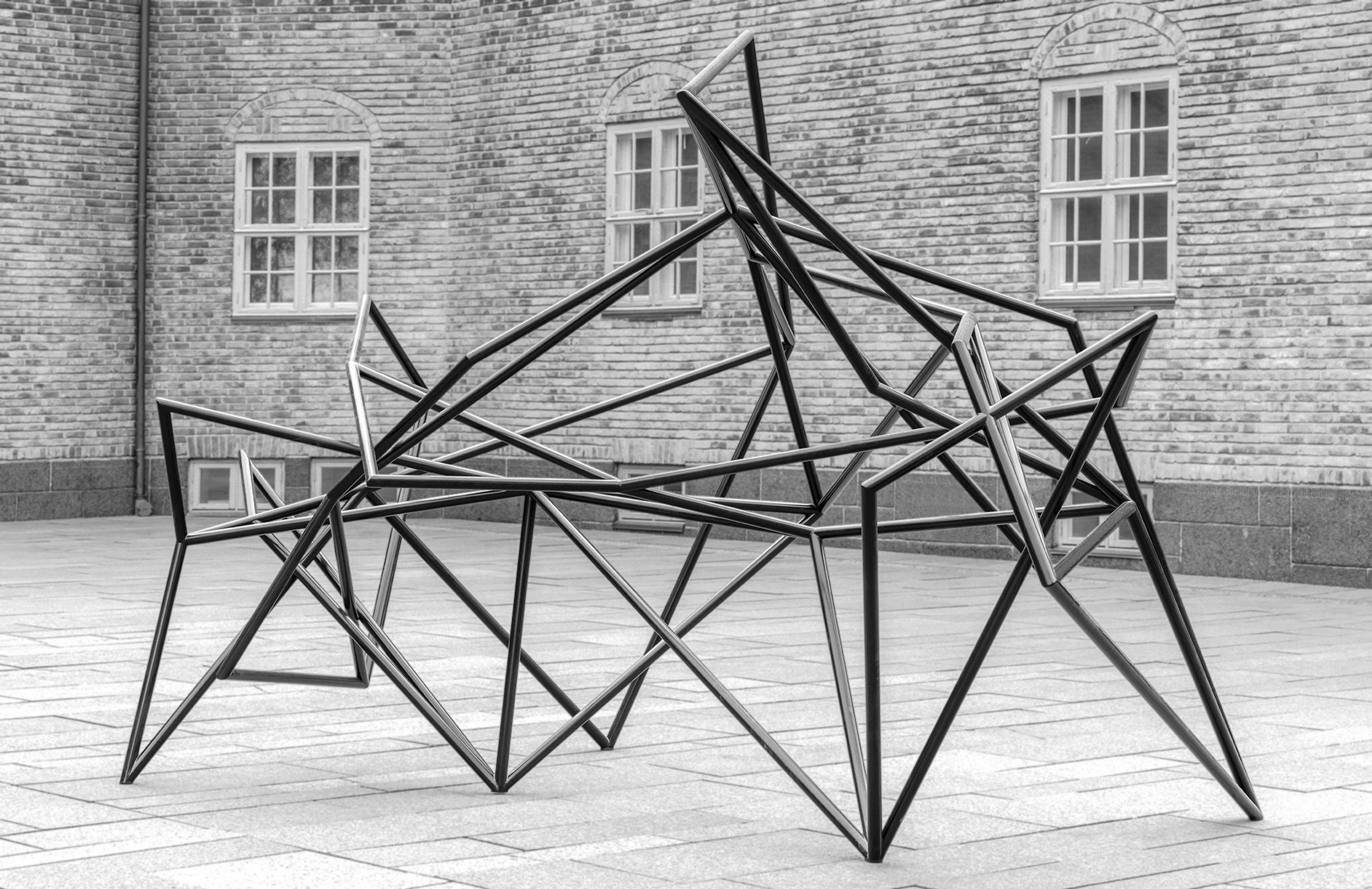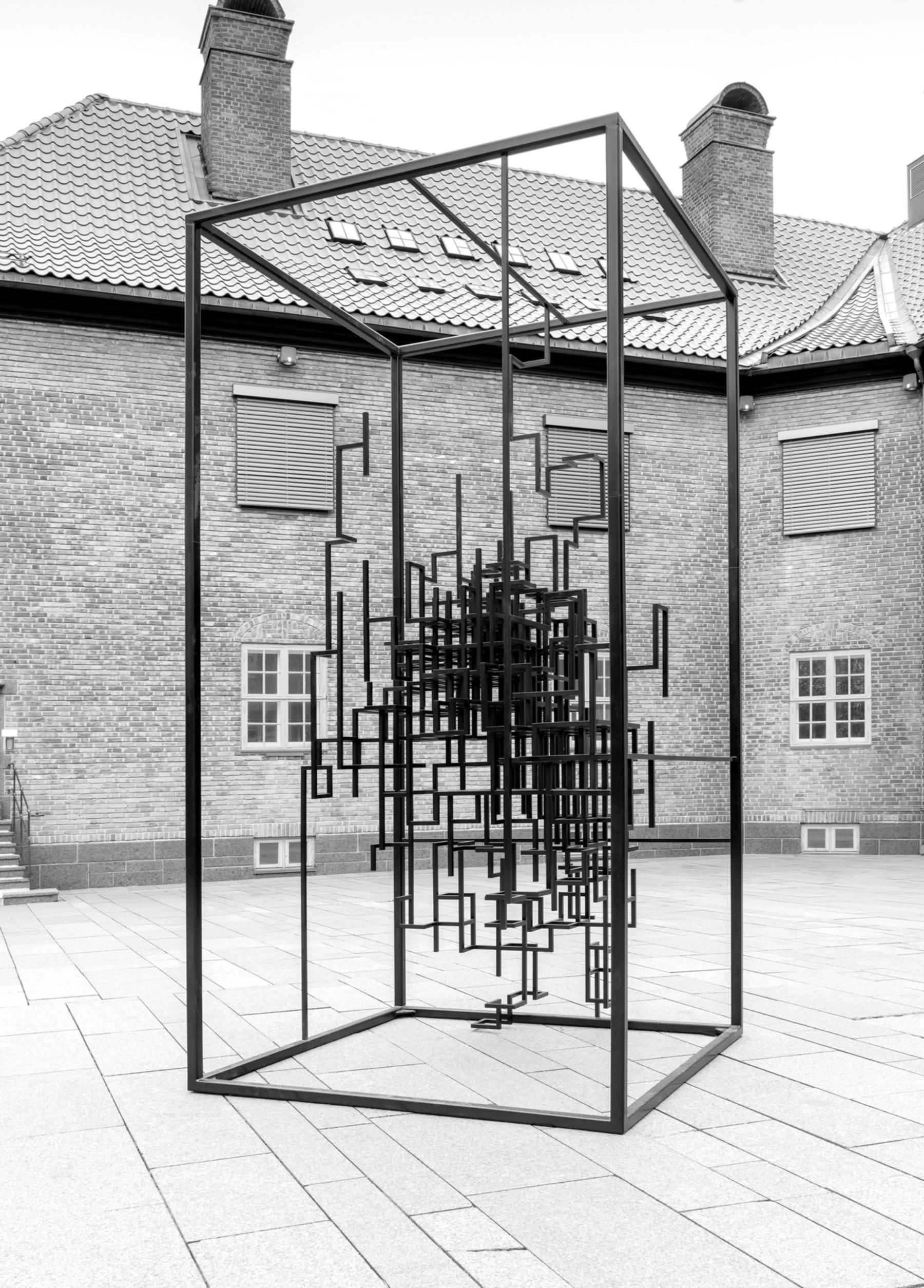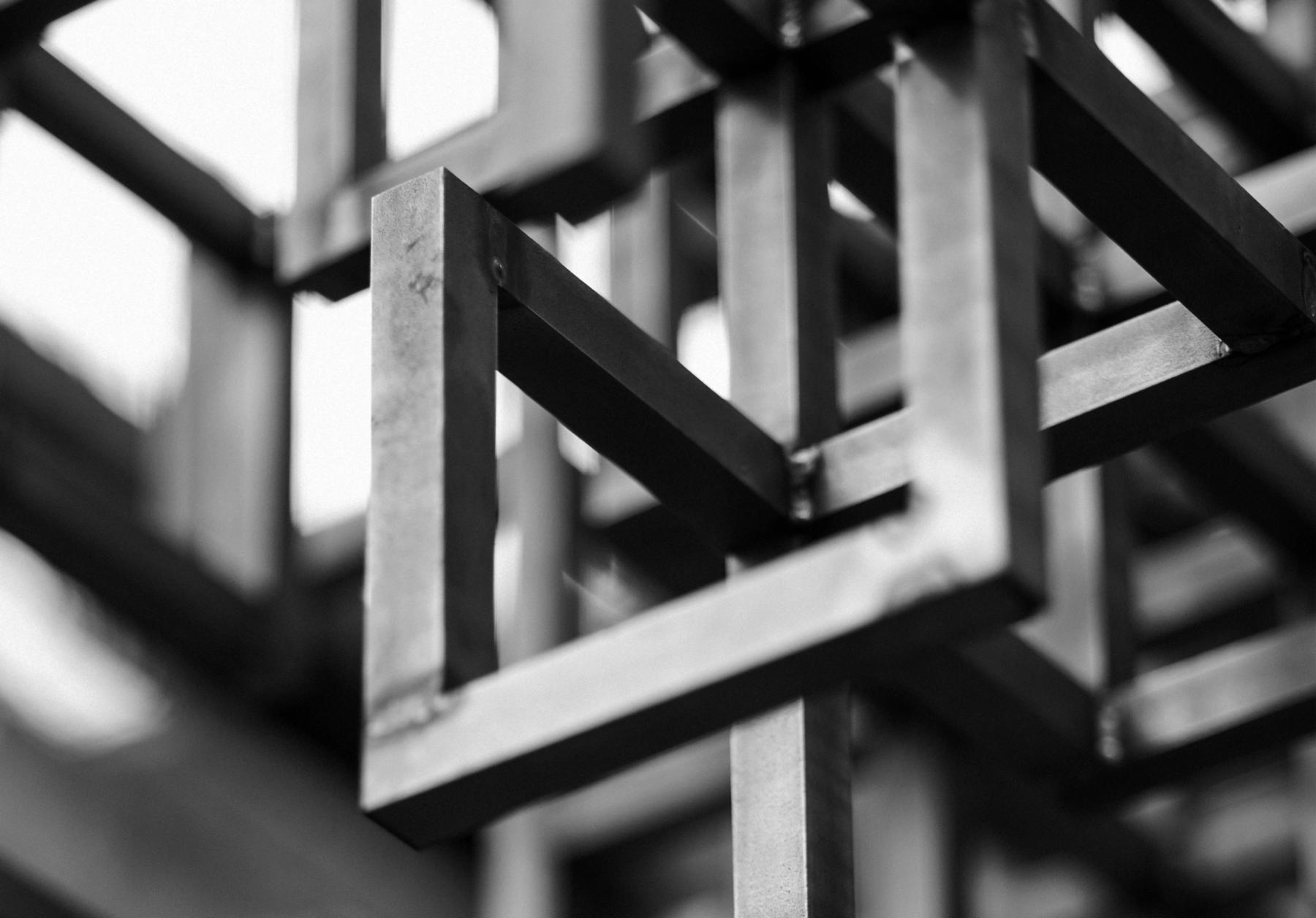
Du Finnes
2020
generative, sculpture
Steel, Concrete, C# code (Grasshopper)
Du Finnes is a series of three sculptural works developed in collaboration with Norwegian artist Sverre Bjertnæs for his retrospective at Haugar Kunstmuseum. The sculptures maintain a direct conceptual connection to Arne Lygre's single-act play of the same name, representing the characters "Man," "Woman," and "Child" as the theatrical performance unfolds in the museum courtyard among the sculptural forms. Each work functions as both autonomous art object and stage element, creating a dialogue between physical presence and dramatic narrative.
The sculptures emerge from a generative script that algorithmically analyzes the spatial relationships within Lygre's text. Each character's sculptural representation is generated through computational interpretation of their spoken lines, translating linguistic patterns into three-dimensional geometric forms. This process transforms the temporal flow of dialogue into static spatial arrangements, creating physical manifestations of each character's textual presence and verbal density within the play's structure.

The "Man" and "Woman" sculptures are fabricated in powder-coated steel, their forms reflecting the active presence of speaking characters within the dramatic narrative. In contrast, the "Child" sculpture is carved from a concrete block, resembling a tombstone and referencing the character's absence from direct dialogue—appearing only through the other characters' spoken memories. This material distinction between steel and concrete reinforces the boundary between present and absent characters within the play's emotional landscape.

© Pernille Sandberg
The "Child" sculpture specifically employs the negative spaces between words in the text as its generative source, creating voids and hollows that suggest loss and absence. This approach transforms the gaps in language into tangible form, where silence becomes sculpture and the unspoken presence of the deceased child manifests through carved negative space. The installation creates a contemplative environment where visitors experience both the performance of grief and its material manifestation simultaneously.
